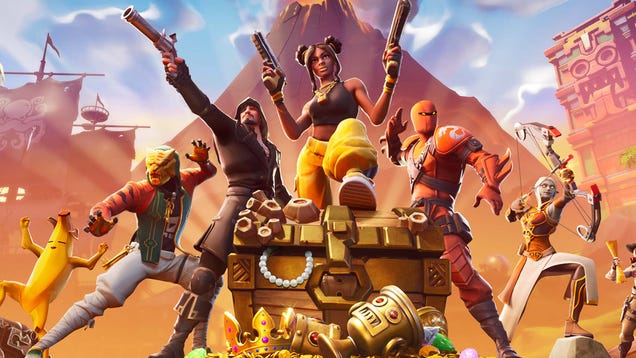Gaming’s Payment Evolution is Changing the Industry
The gaming industry has always been at the forefront of technological innovation, and payment methods are no exception. As we navigate 2025, a seismic shift is quietly reshaping how players engage with their favorite titles, particularly in the free-to-play arena. Buy Now Pay Later has emerged as a game-changing force, fundamentally altering the landscape of gaming monetization and player behavior in ways that echo the most significant disruptions in gaming history.
Recent developments demonstrate how Buy Now Pay Later is becoming more than just a payment option—it’s becoming a cultural phenomenon that bridges the gap between instant gratification and financial responsibility. The convergence of gaming and financial technology represents one of the most significant evolutionary steps in digital entertainment, creating new opportunities while simultaneously raising essential questions about consumer protection and ethical practices.
The Rise of Buy Now Pay Later in Gaming
The partnership between Affirm and Xsolla marks a pivotal moment in the evolution of gaming payments. This collaboration brings Buy Now Pay Later services directly to thousands of game developers, enabling players to split purchases of $50 or more into interest-free biweekly payments or extended monthly installments. The timing couldn’t be more strategic, as the gaming industry generated a staggering $187.7 billion in revenue in 2024, with mobile gaming alone accounting for $92.6 billion.
The integration of Buy Now Pay Later into gaming represents more than just a payment method—it’s a cultural shift that acknowledges the financial realities of modern gaming. With the average lifetime spending on microtransactions reaching €140 per player, and some players spending significantly more, Buy Now Pay Later provides a bridge between desire and affordability.
This approach particularly resonates with younger demographics who have grown up with both gaming and flexible payment options as integral parts of their digital lives.
What makes this development particularly noteworthy is how it democratizes access to premium gaming experiences. Previously, players faced binary choices: pay immediately or wait. Buy Now Pay Later introduces a middle ground that allows players to engage with high-quality content while managing their financial obligations responsibly. This shift reflects broader changes in consumer behavior, where ownership models are being replaced by access models across various entertainment sectors.
The Free-to-Play Monetization Evolution
Free-to-play games have revolutionized the gaming industry through sophisticated monetization strategies that go far beyond simple advertising. The industry has evolved from basic in-app purchases to complex ecosystems featuring cosmetic items, functional upgrades, battle passes, and limited-time events. These strategies generated significant revenue streams, with microtransactions accounting for 77% of all digital game revenue globally, resulting in approximately $121.7 billion in annual revenue
The psychological mechanics behind free-to-play monetization are sophisticated and well-documented. Research indicates that 75.3% of players have spent real money on in-game content, with cosmetic items being the most popular purchase category at 75%. The average player spends approximately €140 over their gaming lifetime; however, spending patterns vary dramatically, with some players investing hundreds of dollars in a single title.
The integration of Buy Now Pay Later into this ecosystem creates new dynamics around player spending behavior. Traditional microtransaction models rely on impulse purchases and immediate gratification, but Buy Now Pay Later introduces a layer of financial planning that could fundamentally alter these patterns. Players can now make larger purchases without the immediate economic impact, potentially leading to increased engagement with premium content and higher lifetime value per player.
However, this evolution also raises important questions about spending habits and financial responsibility. The same psychological triggers that make free-to-play games successful—variable reward schedules, social pressure, and fear of missing out—remain present in Buy Now Pay Later-enabled environments. The challenge for the industry is striking a balance between accessibility and responsible monetization practices that protect vulnerable players while maintaining sustainable revenue models.
Player Psychology and Spending Patterns
The relationship between gaming and spending behavior reveals fascinating insights into consumer psychology in digital environments. Studies show that player motivations for microtransactions include enhancing gaming experiences, social influence, and impulsive buying behaviors. The introduction of Buy Now Pay Later adds another layer to this complex relationship, potentially reducing the friction between desire and purchase while introducing new considerations around financial planning. Research indicates that certain types of microtransactions pose greater risks than others. Loot boxes, which share similarities with gambling mechanics, show stronger correlations with problematic spending behaviors compared to direct purchases. The integration of Buy Now Pay Later into games featuring these mechanics creates a particularly complex environment where players can finance potentially addictive behaviors through structured payment plans.
The democratization of premium gaming content through Buy Now, Pay Later could have a positive impact on player engagement and satisfaction. Players who previously felt excluded from premium experiences due to financial constraints now have access to high-quality content. This accessibility could lead to more diverse gaming communities and reduced inequality in gaming experiences, particularly in competitive environments where premium content provides advantages. However, the ease of making larger purchases through Buy Now Pay Later requires careful consideration of player welfare. The gaming industry has faced increasing scrutiny over potentially exploitative monetization practices, particularly those targeting younger or vulnerable players. The addition of Buy Now Pay Later to this ecosystem creates new responsibilities for developers and publishers to ensure their monetization strategies remain ethical and transparent.
Industry Impact and Market Dynamics
The gaming industry’s embrace of Buy Now Pay Later reflects broader changes in how digital entertainment is consumed and monetized. The U.S. gaming market alone generated $59.3 billion in 2024, demonstrating the massive scale of this transformation. The integration of flexible payment options could accelerate this growth by making premium gaming experiences more accessible to broader audiences.
The competitive implications of Buy Now Pay Later adoption are significant. Games that offer flexible payment options may gain advantages in player acquisition and retention, particularly in markets where traditional payment methods create barriers to entry. This could lead to a new arms race in payment innovation, with developers competing not just on gameplay quality but on payment accessibility and flexibility. The partnership between Affirm and Xsolla demonstrates how financial technology companies are recognizing gaming as a major growth opportunity. The gaming industry’s tech-savvy audience, high engagement levels, and regular purchasing patterns make it an ideal market for Buy Now Pay Later services. This recognition could lead to increased investment in gaming-specific financial products and services. However, the integration of Buy Now Pay Later into gaming also creates new challenges for industry regulation and consumer protection. Gaming monetization is already subject to increasing scrutiny from regulators worldwide, and the addition of credit-like products could trigger additional oversight. The industry must strike a balance between innovation and responsibility to maintain consumer trust and avoid restrictive regulations that could stifle growth.
The Music-Gaming Connection
The relationship between gaming and music continues to evolve in fascinating ways that parallel the Buy Now Pay Later revolution. The 67th Annual Grammy Awards celebrated video game soundtracks, highlighting how gaming music has achieved mainstream recognition. This cultural elevation of gaming content reflects the medium’s growing influence on broader entertainment culture.
Gaming has become a significant platform for music discovery and promotion, with hip-hop and rap listeners being 67% more likely to discover music through video games. Major collaborations, such as Fortnite’s remix featuring Snoop Dogg, Eminem, Ice Spice, and Juice WRLD, demonstrate how gaming platforms serve as powerful promotional tools for the music industry. These partnerships create symbiotic relationships in which gaming platforms gain exclusive content, while artists reach new audiences.
The integration of Buy Now Pay Later into gaming monetization could have interesting implications for music-gaming collaborations. Players who can more easily afford premium gaming content might be more likely to engage with music-related purchases, concert tickets, or merchandise promoted through gaming platforms. This could create new revenue streams for artists while providing gaming companies with additional monetization opportunities.
The physical media renaissance in gaming music, with vinyl releases of game soundtracks becoming increasingly popular, demonstrates how gaming culture influences broader entertainment consumption patterns. This trend toward collectible gaming-related content could benefit from Buy Now Pay Later integration, making high-value items more accessible to dedicated fans.
Ethical Considerations and Industry Responsibility
The integration of Buy Now Pay Later into gaming raises essential questions about ethical monetization and player welfare. The gaming industry has faced increasing criticism over potentially exploitative practices, particularly those targeting vulnerable players or encouraging excessive spending. The addition of credit-like products to gaming ecosystems requires careful consideration of these concerns. Research consistently shows connections between certain types of gaming monetization and problematic spending behaviors. Loot boxes, in particular, show strong correlations with gambling-like behaviors and addiction patterns. The ability to finance these purchases through Buy Now Pay Later could potentially exacerbate these issues by reducing immediate financial friction while creating longer-term financial obligations.
The industry’s approach to ethical monetization varies significantly, with some companies prioritizing transparency and player welfare while others focus primarily on revenue optimization. The integration of Buy Now Pay Later creates new opportunities for both ethical and exploitative practices, depending on how companies implement these systems and what safeguards they put in place.
Successful ethical monetization in the Buy Now Pay Later era will likely require clear communication about financial obligations, reasonable spending limits, and robust support systems for players who may develop problematic Brijjit808 spending patterns. Companies that proactively address these concerns may gain competitive advantages through improved player trust and loyalty, while those that ignore ethical considerations may face regulatory scrutiny and consumer backlash.
Future Implications and Industry Evolution
The integration of Buy Now Pay Later into gaming represents just the beginning of a broader transformation in gaming monetization. As financial technology continues to evolve, we can expect to see additional innovations in how players pay for and engage with gaming content. Dynamic pricing models, personalized payment plans, and AI-driven financial recommendations could all become standard features in gaming platforms.
The success of Buy Now Pay Later in gaming could pave the way for other financial products and services designed specifically for gaming audiences. Gaming-specific credit cards, investment products tied to gaming assets, and comprehensive financial management tools for gaming expenses could all emerge as the industry matures.
The globalization of gaming markets necessitates that payment innovations be effective across diverse economic environments and regulatory frameworks. Buy Now Pay Later’s expansion into international markets, including planned launches in Canada and the UK, demonstrates the global potential of these services while highlighting the complexity of operating across different financial regulatory environments.
The long-term implications of Buy Now Pay Later integration extend beyond individual games or companies to affect the entire gaming ecosystem. Publishers, developers, platform holders, and service providers must all adapt to new payment models and consumer expectations. This adaptation process will likely drive innovation while also creating new challenges around consumer protection and market competition.
New Era of Gaming Accessibility
The integration of Buy Now Pay Later services into gaming represents a fundamental shift in how players access and engage with digital entertainment. This evolution reflects broader changes in consumer behavior, financial technology, and gaming culture that extend far beyond simple payment processing. As the gaming industry continues to grow and evolve, the successful integration of flexible payment options will likely become a competitive necessity rather than a novel feature.
The intersection of gaming and financial technology creates new opportunities for innovation while also raising important questions about consumer protection and ethical business practices. The industry’s response to these challenges will shape not only the future of gaming monetization but also the broader relationship between technology companies and consumer welfare.
As we look toward the future, the success of Buy Now Pay Later in gaming will depend on the industry’s ability to strike a balance between accessibility and responsibility, innovation and ethics, and growth and sustainability. The companies that master this balance will likely emerge as leaders in the next generation of gaming entertainment. At the same time, those that prioritize short-term profits over long-term player welfare may find themselves facing increasing scrutiny and competition.
The revolution in gaming payments is just beginning, and its impact will be felt across the entire entertainment ecosystem. From the way we discover music through games to how we engage with virtual communities, the integration of flexible payment options is creating new possibilities for digital entertainment that were unimaginable just a few years ago. The future of gaming is not just about better graphics or more immersive experiences—it’s about creating more accessible, inclusive, and sustainable ways for players to engage with the content they love.




